For kicks, check out our FTC disclosure here. Updated Aug 6, 2023 ...
Ergonomics & The Motorcycle Triangle (Of Pain)
My sportbike-riding buddies totally mock cruiser riders. They scoff at those "fools" on those uncomfortable bikes, which are ridiculously hard to control with that silly, feet-forward, living-room-recliner riding position. Snarky remarks run rampant.
These very same guys are on motorcycles that could double as medieval torture racks. They're hunched over at the waist with a long stretch to the bars and knees uncomfortably near their hands. All because the foot pegs are high on the side of the bike for ground clearance.
Cruiser riders just shake their heads at the squids! Why would anyone want such a painful experience? Snarky remarks are mirrored.
Both groups of riders are right. Both styles of motorcycle have significant drawbacks. I wouldn't want to ride either one any significant distance! Is there a comfortable motorcycle out there? What makes one style of motorcycle more comfortable than another?
Let's start with the basics, namely the motorcycle seating triangle. Three points of the motorcycle triangle map three places where your body interacts with the bike. I'm referring to the hands, feet and butt.
Above image credits go to Sachin Kalsi and BB Motorcycles. Most of any rider's weight is on the seat. Second is weight on the hands, which may carry some torso, head and arms. Third is the weight of feet and legs.
Motorcycle Triangle & Our Ego's Ergos
What's most comfortable? Well, it's complicated. Let's breakdown ergos.
Ergonomics is a term that's been increasingly used in modern offices. Cubicle cities, with workers in small enclosures, pounding a keyboard for eight hours a day while facing a computer monitor. According to the ergonomic experts, the most comfortable posture is sitting upright, waist and hips bent at about a 90-degree angle, high enough that the forearms are parallel and resting on the desktop, knees around 90 degrees and monitors at eye level.
“The motorcycle triangle is your ergonomic blueprint for a comfortable ride. There's a seat posture to suit every body type and riding style.”
The same general position is good for a motorcycle, with a few caveats. Imagine being seated at your desk in a nice ergonomic posture but with no back support and hurricane-force winds blowing directly at you. Your hands would look for something to hold on to and your core muscles would be straining to keep you upright.
To remedy the situation, you could lean forward into the wind or place a barrier, like a windshield, between you and the wind.
Then, if you've dealt with the wind, there's the pressure of your butt on the seat to deal with. Those of us who were forced to go to church as a child know the discomfort of sitting on a flat, hard surface for an hour or so. Church pews weren't designed for good ergonomics.
The most comfortable seat shape is like those old metal thrones on primitive farm tractors. Two bowl shapes for each of our butt cheeks, which distribute weight evenly over your entire butt surface. Padding is welcomed to supplement the lack of fatty tissue in our butts.
The problem is, different types of motorcycle riding encourage moving around on the seat. Riders of adventure bikes, large on/off-road motorcycles with extra ground clearance and knobby tires, spend a good amount of time standing up off the seat while riding off-road. I owned a KTM SuperMoto, a street bike based on their hardcore LC-4 off-road race bike. The seat shape resembled a 2x4 board. My joke was that what the seat lacked in width, it made up for in hardness.
Painful!
Sportbikes, ridden on a track at speed, need the rider to slide off the edge of the seat. This moves the center of gravity to the side, allowing a steeper lean angle. Feet position is tucked painfully high so the rider's feet don't drag the ground when leaned over for a corner.
And what about our vertically challenged riding friends? A wide seat splays the legs. Narrow seats allow the feet to be closer together, making it easier to get their feet on the ground.
I said we were going to start with the motorcycle seating triangle. We've covered quite a bit of ground without any discussion. Let's talk.
I personally prefer naked motorcycles. Those are motorcycles with zero to minimal wind protection. Aside from not having wind protection, they're generally "sit-up" motorcycles, with a little forward lean to deal with wind blast (just enough to lighten the weight on the riders' hands at freeway speeds), hands slightly lower than elbows and feet directly below or just in front of the hip joint.
At 6'1" height and 34" inseam, that's my profile on my bike. Sportbikes, however, have two critical design priorities that are minimal wind resistance and maximum lean angle. They have a streamlined fairing made of fiberglass or some other hard substance attached to the front of the motorcycle.
Their low windshield also smooths airflow over the top of the machine. Riders themselves and tail sections play a part in streamlining efforts. They have aerodynamic, padded lumps on the back of their leather suits and the handlebars are as low as possible so the rider can crouch down and smooth the wind.
Their motorcycle triangle hurts. A specific example comes to mind. I give you the 2004 Ducati 748, a notoriously painful ride ...
Notice how, for my height/inseam, the hands are at about the same level as the hips, transferring quite a bit of weight to the wrists. Also, compare the knee angle to my Z H2. My antique knees couldn't stand that for long.
Finally, the cruiser (pictured further down). They're popular here in Texas where we have a lot of long, straight roads. Some even call our roads boring. Riding a hard-core sportbike here is tortuous. There aren't any hairpin turns or sharp drop-offs to command your attention and make you forget how much your wrists hurt.
Long-distance riders like to do the Iron Butt competition, covering 1000 miles in 24 hours. Houston to Orange, back to El Paso is 1000 miles of largely straight interstate highway. For this or the long route to lunch in the next state, a relaxed riding position makes sense.
It'll go around corners nicely but that's not the top priority. Foot position is low so the riders' feet drag the pavement at modest lean angles. Backrests reduce pain but limit movement in the seat. On the other hand, they're pleasant to ride. A friendly passenger on the pillion, listening to music, speeds moderate enough to enjoy the scenery; what's not to like? Feet are forward, upper body leaning back on a backrest, handlebars reach to your hands, not the other way around.
What could be a downside? That'd be the feet-forward position. Hitting an obstacle on a motorcycle is a big deal. The front wheel bounces up then down and the rear follows with force. Anything sitting loosely on the rear of the motorcycle can be catapulted into the air.
The remedy, taught in motorcycle safety classes, is to stand up on the foot pegs and get your rear up off the seat. That's close to impossible on many cruiser-styled motorcycles. Your feet are too far forward.
Compare this motorcycle triangle to the other style motorcycles.
Where does this leave us? What kind of motorcycle should you buy? The simple answer is: whatever the hell you want!
Triangle, Trapezoid, Hyperbolic Dodecahedron Prism
According to Andre Agassi, the famous tennis star, image is everything.
The first step is deciding what you want. If you're just beginning your motorcycle riding career, you may have to buy one and try it out for a while. At one time I thought I wanted a cruiser, so I bought one. After a couple of years, it was obvious that cruisers and I weren't a good fit. More experienced riders may have already found what they like.
But like Andre says, you gotta look good.
This site being about sport touring, let's talk about sport touring motorcycles. There are numerous articles and YouTube videos devoted to sport touring motorcycles. You can get more details and opinions than you can stand. But don't settle for "normal" if you don't want to. Riders from around the world have managed to make the most unlikely motorcycles their touring vehicles of choice.
Just about any motorcycle can be a (not necessarily sport but definitely) tourer.
The Sport, The Touring & The Obscure
Ever heard of TeapotOne? Bruce Smart rode a Suzuki GSX-R1000 around the world. The Gixxer Thousand (as they're called), is a serious, hard-core, high-performance sport bike. Most riders are crying in pain after a few hundred miles. He rode his Gixxer 74,000 miles in his journey around the globe and routinely rides 40,000 miles annually.
Then there's Charlie Weisel, who has the most unlikely tourer ever, an honest-to-god chopper. It has a hardtail frame (no rear suspension) and extended front forks. He's traveled over 270,000 miles on that bike, covering 29 countries and 48 states.
Bottom line, buy a motorcycle and ride it. If you're inclined to enjoy the "sport" in sport touring, get some extra training in going around corners and higher speed handling. Track days are a good place to build skills.
If your motorcycle is painful, fix what's causing the pain. Aftermarket seats, attachments to slightly raise or move the handlebars back a touch, or suspension adjustments are commonplace. These things can make a huge difference.
Whatever equates to the right, I mean "best" triangle for you. Understanding the motorcycle triangle and how it affects your riding comfort is crucial. It's not just about the type of bike but how you interact with it, so consider the motorcycle triangle when choosing your next ride.
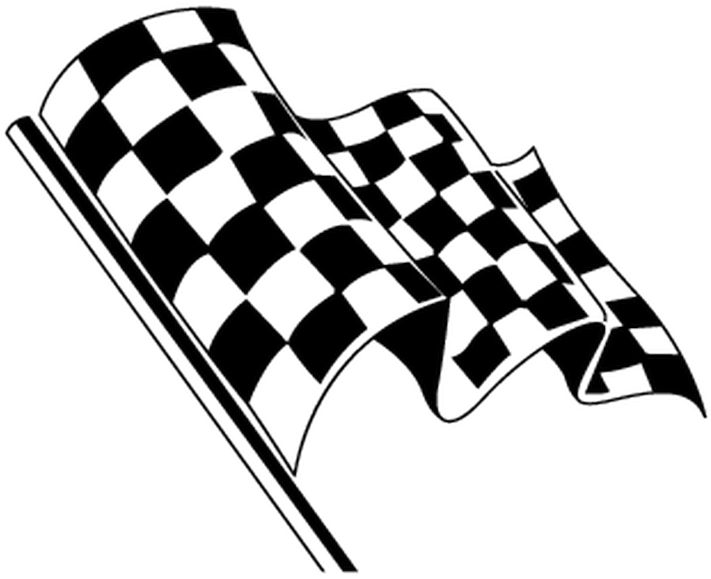
What's Your Angle?
Your preferred posture draws its own motorcycle triangle. What position do you prefer and why? Your input is invited. Leave a comment and/or write an article!
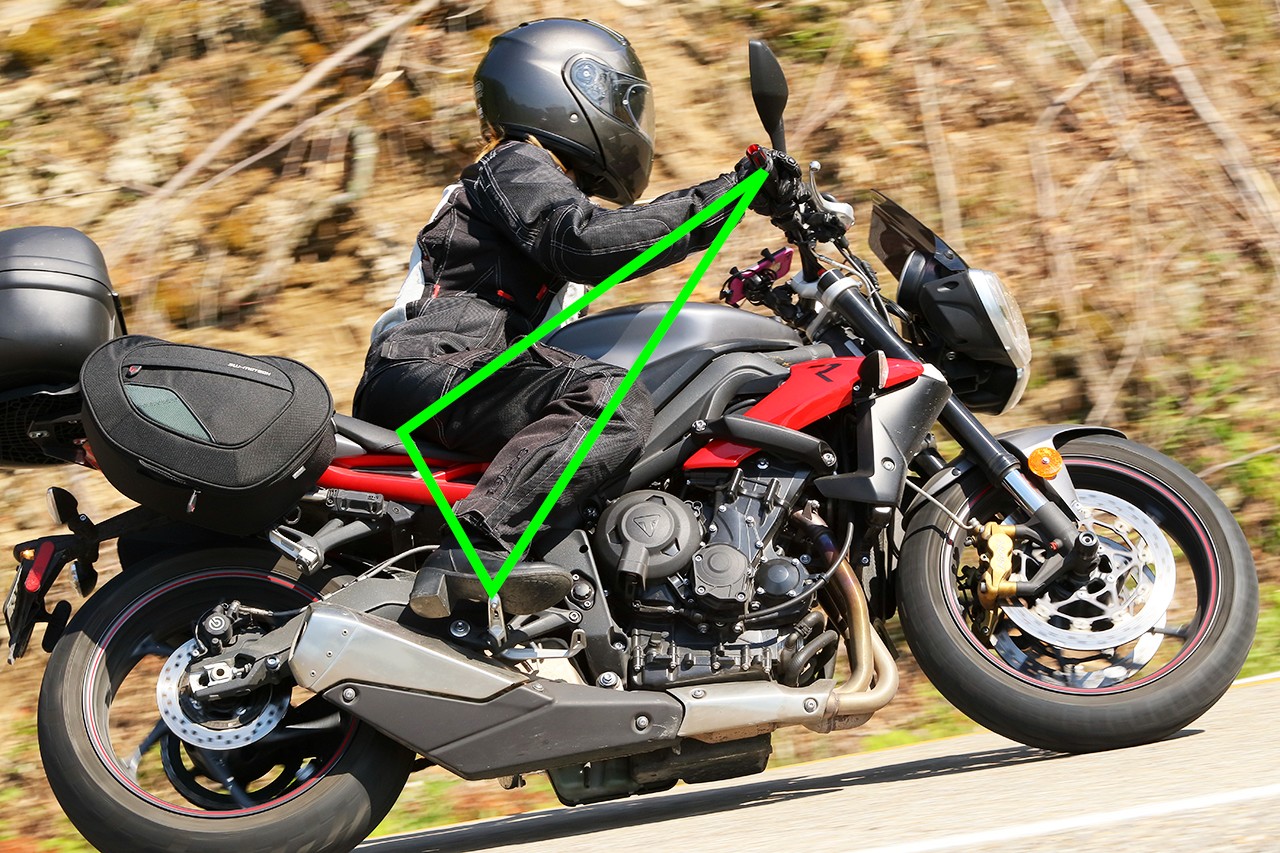
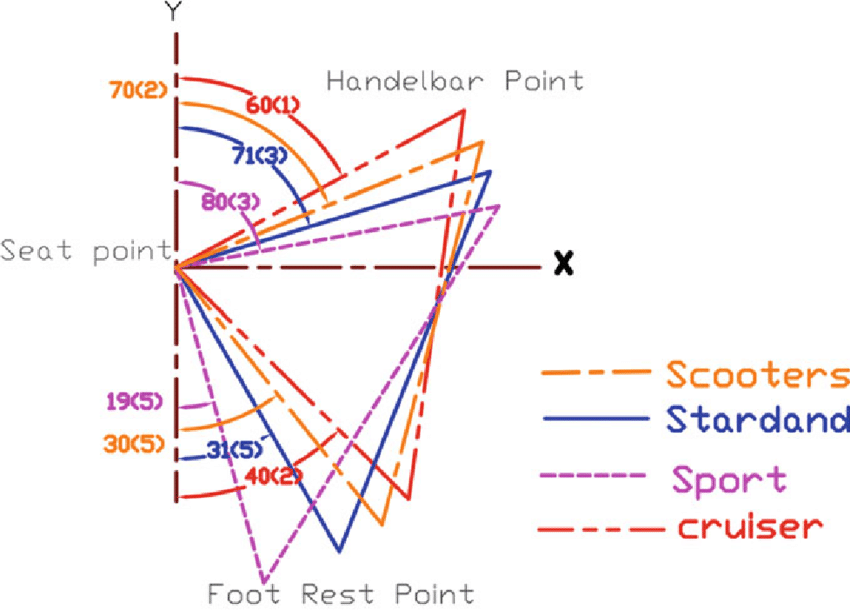
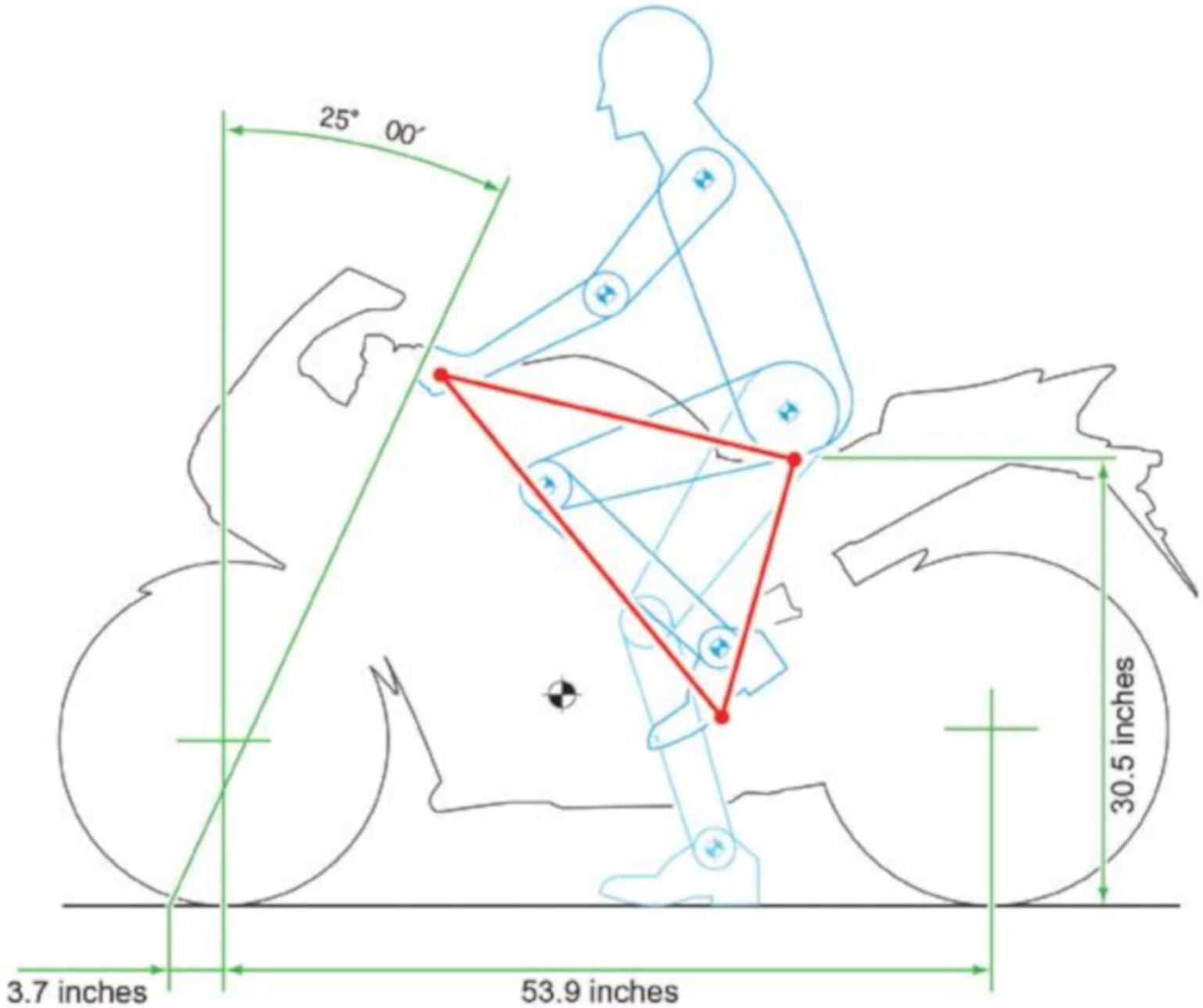
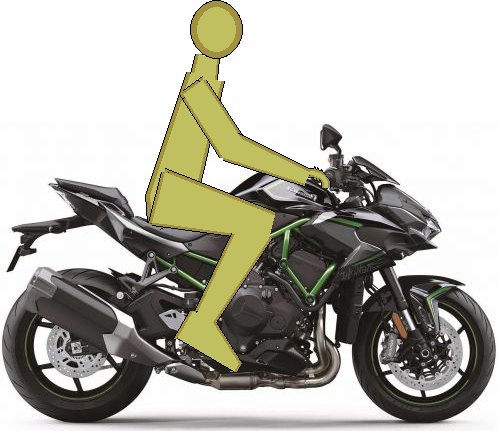
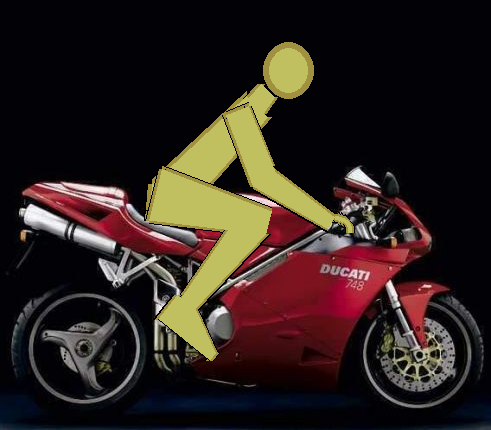
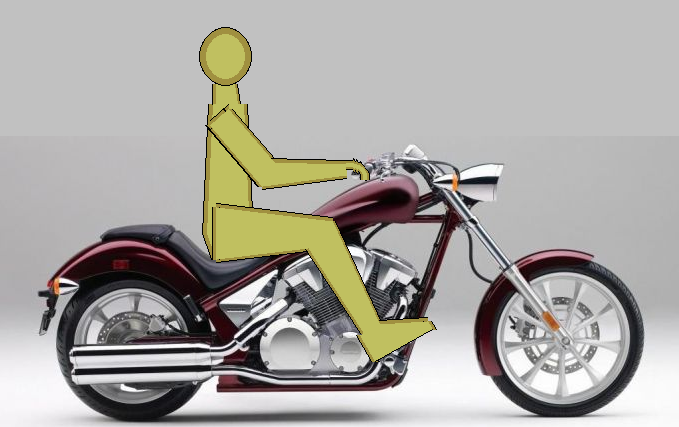



Comments
Thanks that's a great article
As time goes, I went to adventure bikes for touring and commuting, never looked back ;)
V
@M33,
Good move. Well, for you at least.
One rider's choice isn't always right for all.
I like that you definitely read into the "whatever the hell you want" part of this article exactly as it was intended.
At 5'7" with a 32" inseam, I'm more comfortable (and happier) on a true-to-form ST chassis. That's a "modern standard" posture, meaning slightly more forward/assertive than standard or as Kelly refers to it, "sit up". While this posture isn't anywhere close to a full-tuck, galloping race replica (RR profile), it does lend itself extremely well to spirited, chin-over-wrist curve carving.
Thoughts gone wild? Write an article!